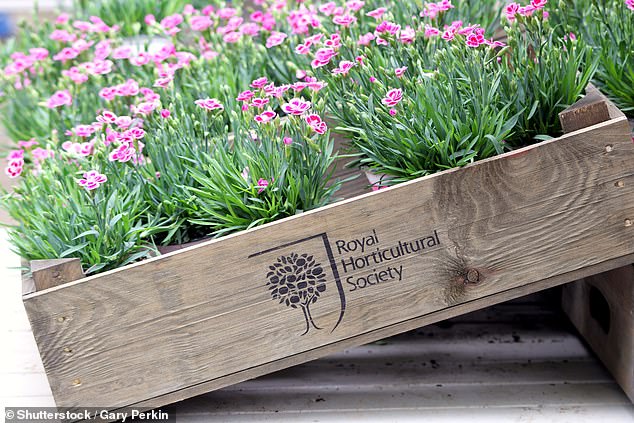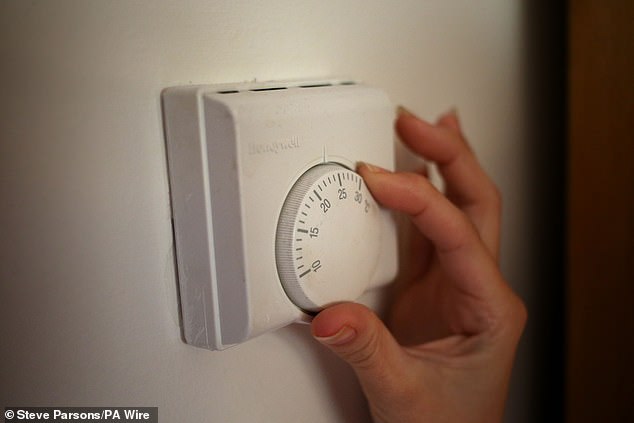Why might you only have six weeks to save your houseplants this winter?
Houseplant collectors will know that the changing seasons bring new challenges to their care.
And the Royal Horticultural Society yesterday sounded the alarm for winter, warning there are ‘six weeks to save our houseplants’.
Plant owners should check the health of their houseplants this week as they prepare for a sharp increase in reported problems in the new year, the charity said.
A combination of lower light levels, fluctuating temperatures from central heating and lower humidity can stress plants, resulting in yellowing leaves, bud drop, scorching and shrunken compost and possibly eventual plant loss.
Identifying problems now and making small changes to the positioning and care of houseplants can help ensure plants survive through spring, with the RHS listing some of the early warning signs to look out for and possible solutions.
In January, people call the RHS advice line about saving plants that have shriveled or wilted.
Houseplant collectors will know that the changing seasons bring new challenges to their care. And the Royal Horticultural Society sounded the alarm for winter yesterday – warning there are ‘six weeks to save our houseplants’ (stock image)

Plant owners should check the health of their houseplants this week as they prepare for a sharp increase in reported problems in the new year, the charity said.
According to the RHS, there are 85 percent more applications in January than in December and November.
Potted plants thrived during the pandemic as people spent more time at home — and the craze for posing with Swiss cheese plants and aspidistra on social media looks set to continue.
RHS Plants also sees one of three peaks in plant purchases at the beginning of the year, when people may have decided to start over.
Another is in the run-up to Christmas, when plant gifting is popular, with favorites including poinsettia, azaleas, Christmas cacti and cyclamen.
To ensure these get the best start, the RHS advisory team recommends purchasing fresh stock with no signs of browning leaves, and taking them straight home to a cool room (such as a bathroom) to acclimatize before they are moved to warmer parts of the room. house.
Chris Taylor, RHS Horticultural Advisor said: ‘When it comes to houseplants, when watering, be guided by the weight of the pot and use your finger to gauge how moist the potting soil feels.
‘The goal is to keep plants moist, but never soggy. If plants become waterlogged, they can sometimes be saved by removing them from the pot and drying the roots with some tea towel before repotting.’
If houseplants look sick despite all efforts, there are several good replacements for the winter months.

A combination of lower light levels, fluctuating temperatures from central heating and reduced humidity can stress plants, resulting in yellowing leaves, bud drop, scorching and shrunken compost and possibly the eventual loss of the plant (stock image)
They include moth orchids, which are happy in warmer rooms, ZZ plant (Zamioculcas zamiifolia) and spider plant (Chlorophytum comosum), both of which can withstand forgetful watering and low light.
Rabbit’s foot fern (Davallia solida var. fejeensis) is another option because, unlike most ferns, it can tolerate some drought and easily water the rhizomes on its spreading surface that take up water when watered.
Guy Barter, head horticulturist, says: ‘Houseplants are becoming increasingly popular, especially among people new to gardening or for whom outdoor space is at a premium.
In May, members’ advice on houseplants revolves around what to grow and where in August, when temperatures peak, it’s about care and maintenance, while in January it’s usually about fixing plants that have wilted, turned brown or otherwise withered. look suspicious.
‘In January we even received 85 percent more applications than the two months before.
‘We often find that these plants have been unintentionally neglected in November and December, when central heating leads to fluctuating temperatures and lower humidity levels, stressing plants and making them crave a move to a light-filled spot to drive away the dark days.
In many cases, houseplants can be saved with a little TLC, but there is also a peak in houseplant sales at RHS Plants in January, when people may have decided to start over.’
